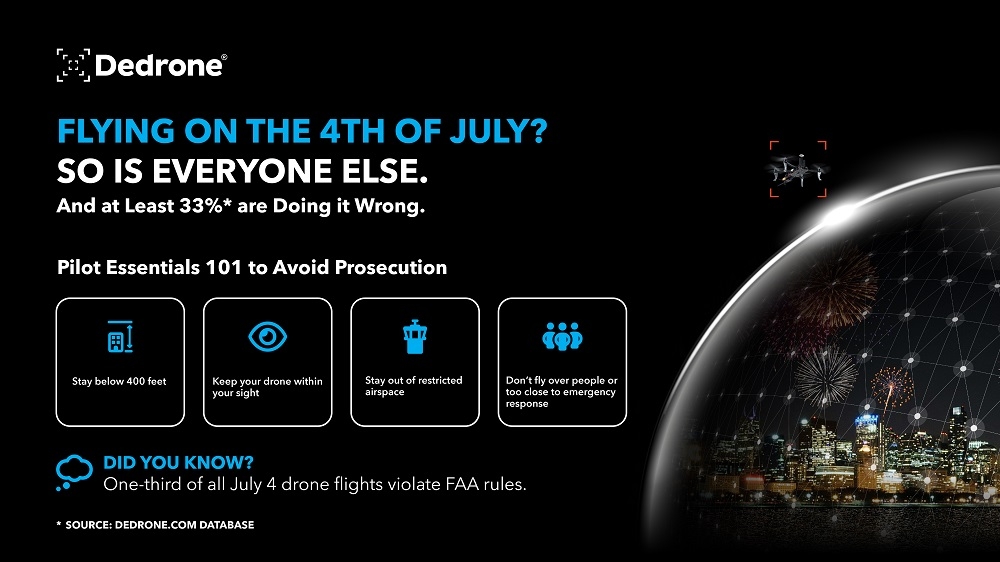Staying safe on the 4th of July, with drones

By Ken Showers, Managing Editor
Updated 2:01 PM CDT, Wed July 3, 2024

YARMOUTH, Maine — Dedrone, a company that protects organizations from malicious drones through a customizable counter-drone solution, is highlighting the variety of security and safety issues for amateur and professional pilots this Fourth of July.
Many cities are opting for drone shows as a safer option than fireworks, which have been known to cause many safety issues ranging from injury, PTSD episodes, fires and explosive malfunctions. But even these newer and high-tech drone shows are not free from issues.
“The potential for drones to cause accidents or be used maliciously is a serious threat that cannot be ignored,” the company says.
Above all, Dedrone cautions pilots to follow Federal Aviation Administration (FAA) rules regarding drone operation. As part of its general guidelines, the FAA warns people not to fly over people or near fireworks during recreational activities, but the company believes as many as one third of all drone flights on the 4th violate FAA flight rules.
In 2023, there was a 3.7x increase in drones flying too high, endangering other aircraft, and a 4.3x increase in drones entering restricted airspace, according to Dedrone.
"The key takeaway for commercial security drone operators is that flying drones beyond visual line of sight (BVLOS) for longer periods of time is still illegal if you do not have a specific waiver from the FAA,” said Mary-Lou Smulders, CMO and head of government affairs.
Setting aside the obvious value that security drones offer commercial entities in the form of data gathering and surveillance, it’s important to remember that the sky is shared by everyone, Smulders said.
“The primary concern is airspace conflicts between the security drones and other drones or crewed aircraft,” she said. “Without a ground-based airspace deconfliction system, visual observers are still required to maintain a direct line of sight with the drone.”
Smulders noted that the recently passed FAA Reauthorization Act may bring about some changes in the laws, but as the airspace becomes more complex, airspace deconfliction systems will become even more necessary. The act addresses expanding air traffic controller training capacity and requiring the FAA to update the training process for air traffic controllers and requiring the FAA to establish a regulatory pathway for the certification or approval of commercial unmanned aircraft to operate beyond the visual line of sight.
Comments